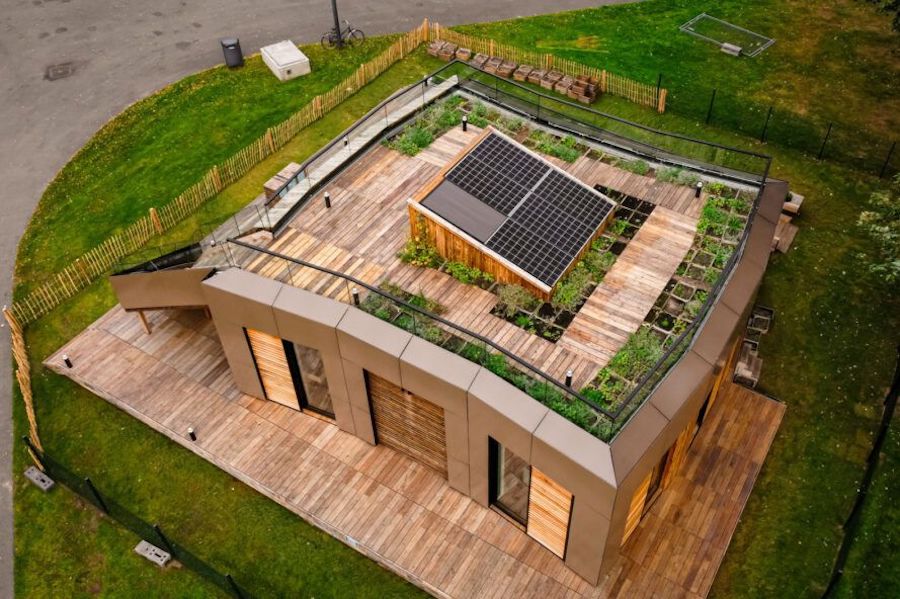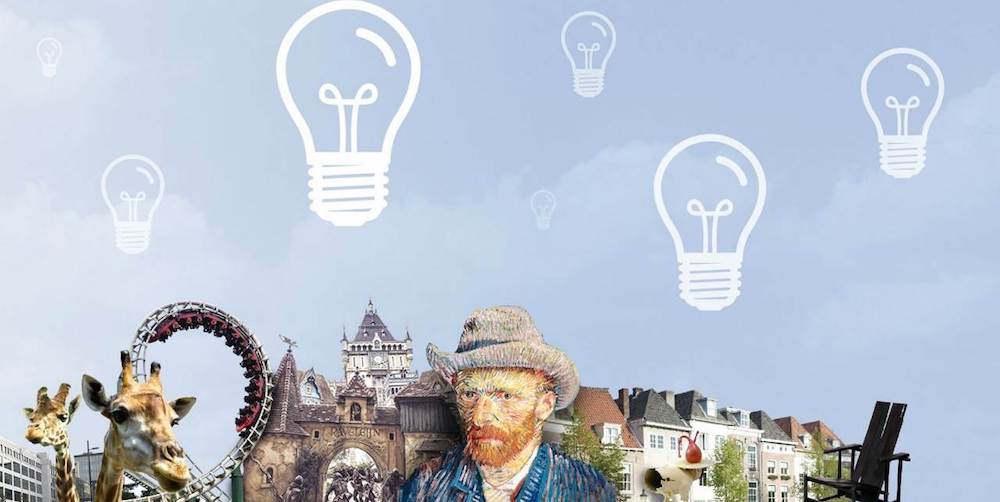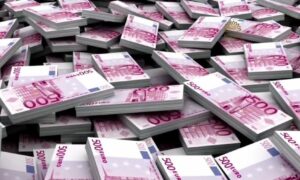(Editor’s note: At Dispatches, our mission is all about the global mobility of talent. This Eindhoven Business Briefing focusing on Eindhoven and Silicon Valley is part of our Tech Tuesday series.)
Eindhoven doesn’t want to be Silicon Valley. That much is clear. Well, Eindhoven civic leaders. Its corporate citizens already decided its fate, and that’s a source of tension that’s been around for a century. Welcome to the final Eindhoven Business Briefing of 2021. This week, we’re trying to get our heads around the dichotomy that is the most successful deep-tech innovation center in Europe.
NRC had a post about that a couple of months ago, about how local corporations want government support to stay liveable. City leaders don’t want the Woodside housing prices, the San Jose congestion and all the complications of being the place outsiders come for career opportunities.
This is nothing new.
The Eindhovens Dagblad has a recent series on the 100th anniversary of Eindhoven becoming “Groot Eindhoven,” or Greater Eindhoven, what we Americans would term “an incorporated city.” Reading through the various posts, one consistent theme is that city fathers were never on the same page with business leaders.
While the Philips family – Jews originally from Germany – were building one of the most successful consumer electronics brands in the world, local Roman Catholic leaders were firmly of the opinion that Eindhoven should remain a collection of small villages. Instead, Philips built what authors Thom Aussems and Hans Horsten call “a mini-welfare state that was unparalleled in the world in scale and diversity.”
In the Dagblad installment “How Eindhoven always lagged behind the facts and remained ‘the simple provincial town,” authors Aussems and Horsten document how Eindhoven has become Europe’s innovation center despite its political leadership, not because of it. And the way the ruling class stymied progress was to make it very, very difficult to build new housing.
Housing was below par and construction got stuck in “a morass of bureaucracy and a lack of action and vision,” according to Aussems and Horsten
Sound familiar?
In fact, Aussems and Horsten call the tensions between Philips and the Catholic Church “a Cold War” that lasted from the 1950s until Philips surrendered and moved its headquarters to Amsterdam in 1998. In the late 1990s, Eindhoven was voted the Netherlands’ most boring city in a survey by TV presenter Frits Bom.
“Today the urban level of Eindhoven is still a bone of contention. The large companies complain about the lack of housing and facilities that hinder them in recruiting expats. It still looks like the 1920s,” according to Aussems’ and Horsten’s post.
Another installment in the series includes an interview with star architect and urban planner Winy Maas, co-founder of architectural firm MVRDV, which oversees Eindhoven’s urban development. Maas notes the decisions city government officials are making now will have long-term impact, especially related to transportation. But if Eindhoven can’t develop a progressive image, what’s the point? He adds, “People have to want to come to Eindhoven. Otherwise, you don’t need a connection.”
This paragraph in particular caught our attention:
If the city “dares to make real choices in the coming year,” then – according to Maas – Eindhoven can grow to three or four million inhabitants in the next hundred years. “Growth is primarily a choice. Do you want to densify the city center or also the neighborhood around it? High towers in Woensel or Tongelre? I feel resistance about that at the moment, but that could just be different in the future.”
For context, four million people would make it roughly the size of Minneapolis, a mid-size Midwestern city. And potentially the largest city in the Netherlands.

How the Brabant ecosystem works
NRC also has a look at how government funding and emerging tech companies come together in Brabant, the administrative region that includes Eindhoven. How the Brabant ‘eco-system’ works in practice: the “case study” of SMART Photonics.
An interesting look behind the scenes in that post “reveals” that government funding from economic development agencies such as BOM is funneled indirectly through early-stage investment firms to promising companies.
This is part of a “three-pillar” system:
• The first pillar in Brabant’s Stanford/VC/tech startup model is Eindhoven University of Technology, which produces the startups.
• The second pillar is established companies such as ASML, NXP and VDL, which supply new tech and, increasingly, investment and mentoring in startups and scale-ups.
• The third pillar is the financiers who (sort of) supply the capital. But with no Sand Hill Road, BOM and other government entities struggle to fill a venture capital vacuum.
In the United States, some government funding for new tech comes through Small Business Administration programs, DARPA, the Geospatial Intelligence Agency and other entities, and this helps keep the U.S. the dominant global tech power. But risk capital from VCs such as Kleiner Perkins and Andreessen Horowitz fund the most promising startups. And that makes a huge difference.
The NRC post focuses on the threat of Chinese investors seizing control of SMART Photonics, a startup founded at TU/e in 2012 that makes advanced photonic chips for clients. The post looks at the tortuous trail of government intervention it took to keep the company “100-percent Dutch.”
That included a series of convoluted investments that finally totaled 50 million euros raised after years of someone filling out stacks of government paperwork and waiting.
Or – you know – they could have gone to the U.S. and raised a paltry 50 million in about five minutes.
The post is meant to illustrate how all the government agencies and foundations and ministries of economic affairs joined hands to save SMART Photonics. But what it really does is point out the system’s vulnerability to outside investors.

TU/e students’ sustainable house design featured in Inhabitat
VIRTUe, a student team from the Technical University of Eindhoven, is getting global pub in Inhabitat for its housing plan that could transform urban living. The design is called “Ripple” not for the 1960s hippie wine, but for the ripple it will make across the global pond.
From the post:
The Ripple house is primarily constructed using repurposed wood. Colored solar panels that match the tone of the wood are used to harness solar energy. Depending on the site, the solar panels can be moved or oriented differently in order to best capture sunlight. By primarily capturing photovoltaic energy from the exterior walls, the rooftop is freed for urban farming and can be used to create a microclimate to foster the region’s biodiversity.
VIRTUe developed Ripple for the Solar Decathlon Europe 2021/2022 in Wuppertal, Germany, where they will be competing against 17 other teams next summer. Whether it’s solar cars or solar houses, TU/e students always excel.
LeasePlan orders 5,000 Lightyear cars
Speaking of TU/e and solar cars, Lightyear came out of the TU/e world dominating solar car team. In five years, the concept has raised at least 150 million euros and entered into a partnership with Finnish company Valmet Automotive to build the cars soon. Very soon.
This is kind of different because it’s rare when companies order cars that don’t, well, actually exist. But Amsterdam-based car-as-a-service giant LeasePlan is betting on the come that Eindhoven-based solar Lightyear will be able to produce a car by 2024. Well, not just one car. Five thousand of its Lightyear Two, a less-expensive version of the 150,000 euro Lightyear One, which also doesn’t exist other than as prototypes.
All that said, with the increasing efficiency of solartech, a solar car is a better idea every day. Will Eindhoven beat Elon Musk?
By the way, LeasePlan has 1.8 million vehicles under management in over 29 countries. Who knew ….
Briefs
• Technical University of Eindhoven’s newest spinoff MicroAlign is getting funding from PhotonDelta, the government entity that manages the Smart Industries TTT Fund. MicroAlign is creating revolutionary technology (isn’t everyone) that … well, we have no idea what they do. You can figure it out here on Innovation Origins.
• Innovations Origins also has a deep-dive into TNO’s development of wireless 5G.
Read more here on Dispatches about EIndhoven and its tech ecosystem.














